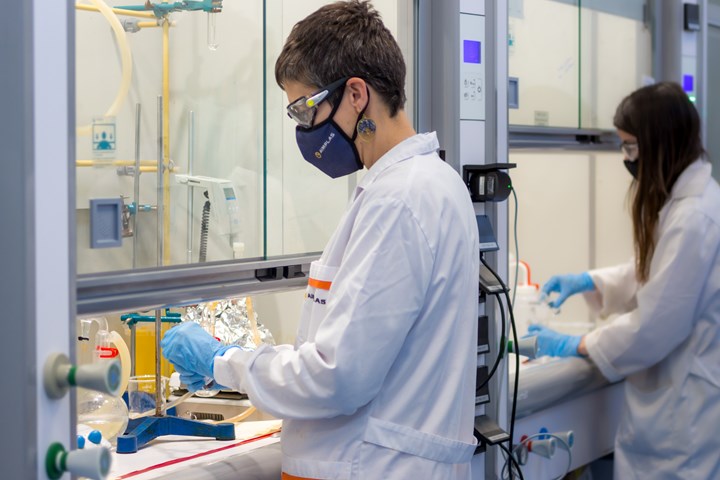Aimplas, industry partners set sights on chemical recycling of composites
The EROS project, with the participation of Aimplas and the Institute of Ceramic Technology (ITC) is working to develop new recycling process to recover and repurpose composite materials from wind and aeronautic industries.

Photo Credit: Aimplas
Aimplas, the Plastics Technology Centre (Valencia, Spain) and the Institute of Ceramic Technology (ITC, Castellón, Spain) are developing the EROS Project. Under this project, new recycling processes will be developed to recover composite materials from the aeronautics and wind turbine sectors to repurpose into new products for the transport and ceramics industries.
Aimplas notes that waste management for composite materials continues to pose intrinsic challenges, making recycling them a complex process, and thus the reason for EROS. For example, it is estimated that ten thousand aircraft will be withdrawn from service globally in the next twenty years. Half of Europe’s wind turbine installed capacity of 146 gigawatts (GW) will also be twenty years old by 2030.
Mechanical and chemical recycling processes such as solvolysis and pyrolysis will be performed to produce three new products: glass fiber, carbon fiber and glycols. Glass fiber will be applied in the form of ceramic supports, frits and glazes to reduce tile firing temperature. Inks will be manufactured with the glycols and carbon fiber will be used to make sustainable composites for the transport sector.
Also participating in the project are Reciclalia, Keraben, Fritta and Sofitec to ensure that the results reach the entire value chain.
This project falls within the framework of the National Retos Colaboración call and is funded by the Ministry of Science, Innovation and Universities.
See “RECONTRAS project validates use of microwaves and laser welding to obtain recyclable composites” for more information on Aimplas’ recycling efforts.
Related Content
-
Infinite Composites: Type V tanks for space, hydrogen, automotive and more
After a decade of proving its linerless, weight-saving composite tanks with NASA and more than 30 aerospace companies, this CryoSphere pioneer is scaling for growth in commercial space and sustainable transportation on Earth.
-
Novel composite technology replaces welded joints in tubular structures
The Tree Composites TC-joint replaces traditional welding in jacket foundations for offshore wind turbine generator applications, advancing the world’s quest for fast, sustainable energy deployment.
-
Composites end markets: Automotive (2024)
Recent trends in automotive composites include new materials and developments for battery electric vehicles, hydrogen fuel cell technologies, and recycled and bio-based materials.















